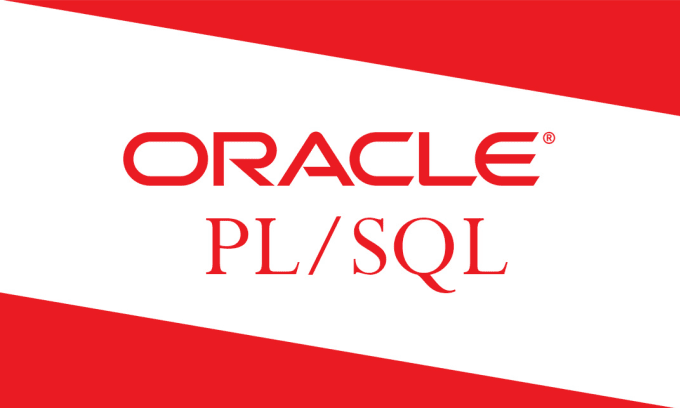PL/SQL

This course introduces students to PL/SQL, Oracle’s procedural extension language for SQL and the Oracle relational database. PL/SQL is a procedural language extension to Structured Query Language (SQL). The purpose of PL/SQL is to combine database language and procedural programming language. Participants explore the differences between SQL and PL/SQL. They also examine the characteristics of PL/SQL and how it is used to extend and automate SQL to administer the Oracle database.
Introduction to PL/SQL
- Overview of PL/SQL
- Identify the benefits of PL/SQL Subprograms
- Overview of the types of PL/SQL blocks
- Create a Simple Anonymous Block
- How to generate output from a PL/SQL Block?
Declare PL/SQL Variables
- List the different Types of Identifiers in a PL/SQL subprogram
- Usage of the Declarative Section to Define Identifiers
- Use variables to store data
- Identify Scalar Data Types
- The %TYPE Attribute
- What are Bind Variables?
- Sequences in PL/SQL Expressions
Write Anonymous PL/SQL Blocks
- Describe Basic PL/SQL Block Syntax Guidelines
- Learn to Comment the Code
- Deployment of SQL Functions in PL/SQL
- How to convert Data Types?
- Describe Nested Blocks
- Identify the Operators in PL/SQL
SQL Statements in a PL/SQL block
- Invoke SELECT Statements in PL/SQL
- Retrieve Data in PL/SQL
- SQL Cursor concept
- Avoid Errors by using Naming Conventions when using Retrieval and DML Statements
- Data Manipulation in the Server using PL/SQL
- Understand the SQL Cursor concept
- Use SQL Cursor Attributes to Obtain Feedback on DML
- Save and Discard Transactions
Control Structures
- Conditional processing using IF Statements
- Conditional processing using CASE Statements
- Describe simple Loop Statement
- Describe While Loop Statement
- Describe For Loop Statement
- Use the Continue Statement
Composite Data Types
- Use PL/SQL Records
- The %ROWTYPE Attribute
- Insert and Update with PL/SQL Records
- INDEX BY Tables
- Examine INDEX BY Table Methods
- Use INDEX BY Table of Records
Explicit Cursors
- What are Explicit Cursors?
- Declare the Cursor
- Open the Cursor
- Fetch data from the Cursor
- Close the Cursor
- Cursor FOR loop
- The %NOTFOUND and %ROWCOUNT Attributes
- Describe the FOR UPDATE Clause and WHERE CURRENT Clause
Exception Handling
- Understand Exceptions
- Handle Exceptions with PL/SQL
- Trap Predefined Oracle Server Errors
- Trap Non-Predefined Oracle Server Errors
- Trap User-Defined Exceptions
- Propagate Exceptions
- RAISE_APPLICATION_ERROR Procedure
Stored Procedures
- Create a Modularized and Layered Subprogram Design
- Modularize Development With PL/SQL Blocks
- Understand the PL/SQL Execution Environment
- List the benefits of using PL/SQL Subprograms
- List the differences between Anonymous Blocks and Subprograms
- Create, Call, and Remove Stored Procedures
- Implement Procedures Parameters and Parameters Modes
- View Procedure Information
Stored Functions
- Create, Call, and Remove a Stored Function
- Identify the advantages of using Stored Functions
- Identify the steps to create a stored function
- Invoke User-Defined Functions in SQL Statements
- Restrictions when calling Functions
- Control side effects when calling Functions
- View Functions Information
Packages
- Listing the advantages of Packages
- Describe Packages
- What are the components of a Package?
- Develop a Package
- How to enable visibility of a Packages Components?
- Create the Package Specification and Body using the SQL CREATE Statement and SQL Developer
- Invoke the Package Constructs
- View the PL/SQL Source Code using the Data Dictionary
Deploying Packages
- Overloading Subprograms in PL/SQL
- Use the STANDARD Package
- Use Forward Declarations to solve Illegal Procedure Reference
- Implement Package Functions in SQL and Restrictions
- Persistent State of Packages
- Persistent State of a Package Cursor
- Control side effects of PL/SQL Subprograms
- Invoke PL/SQL Tables of Records in Packages
Triggers
- Describe Triggers
- Identify the Trigger Event Types and Body
- Business Application Scenarios for Implementing Triggers
- Create DML Triggers using the CREATE TRIGGER Statement and SQL Developer
- Identify the Trigger Event Types, Body, and Firing (Timing)
- Differences between Statement Level Triggers and Row Level Triggers
- Create Instead of and Disabled Triggers
- How to Manage, Test and Remove Triggers?
Creating Compound, DDL, and Event Database Triggers
- What are Compound Triggers?
- Identify the Timing-Point Sections of a Table Compound Trigger
- Understand the Compound Trigger Structure for Tables and Views
- Implement a Compound Trigger to Resolve the Mutating Table Error
- Comparison of Database Triggers to Stored Procedures
- Create Triggers on DDL Statements
- Create Database-Event and System-Events Triggers
- System Privileges Required to Manage Triggers
Institution Certification certified by DOIS Education & Technologies Private Limited
Duration of Course: 18Hrs
Course Price : 8,800 INR + GST OR 154 USD
